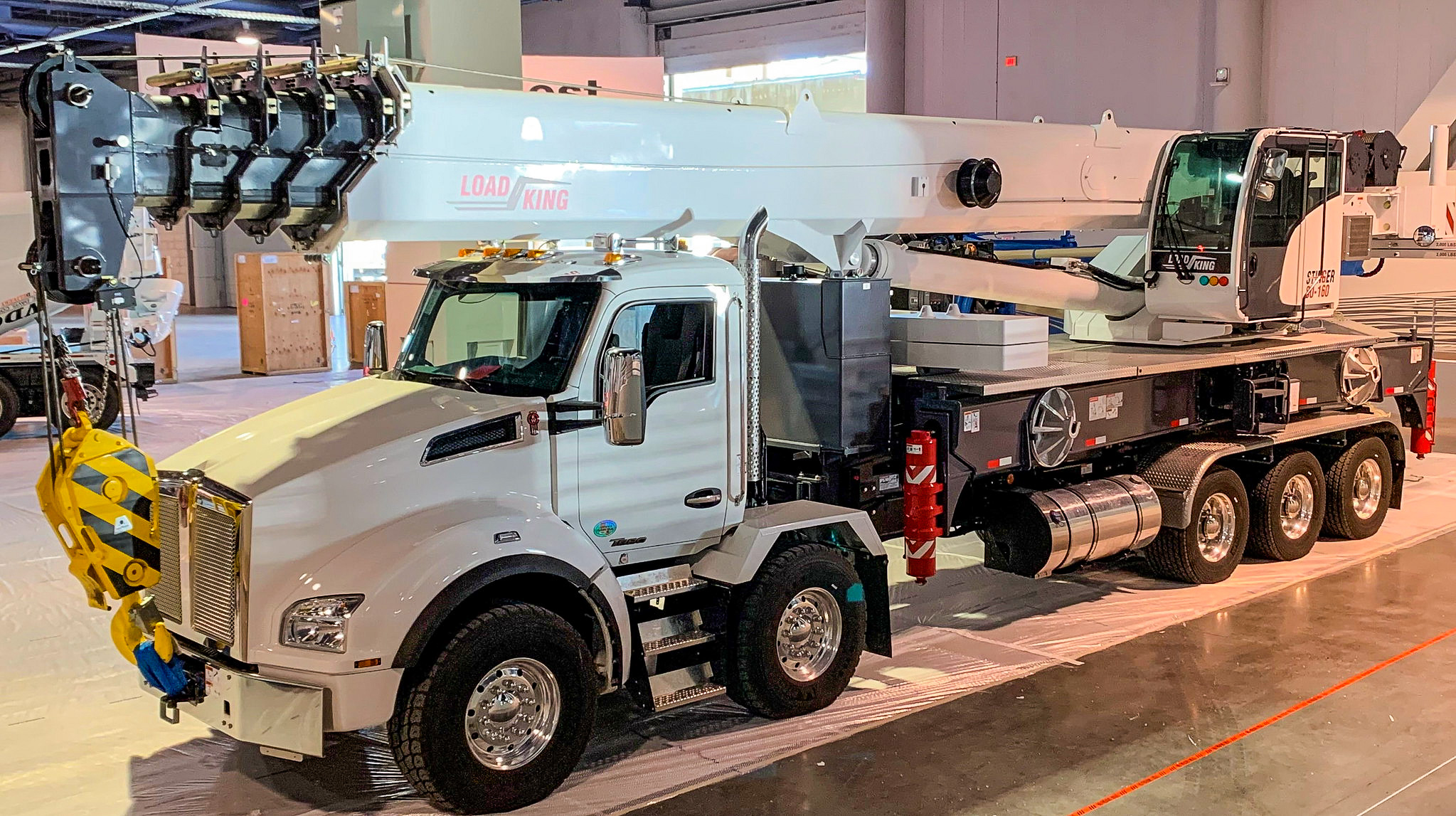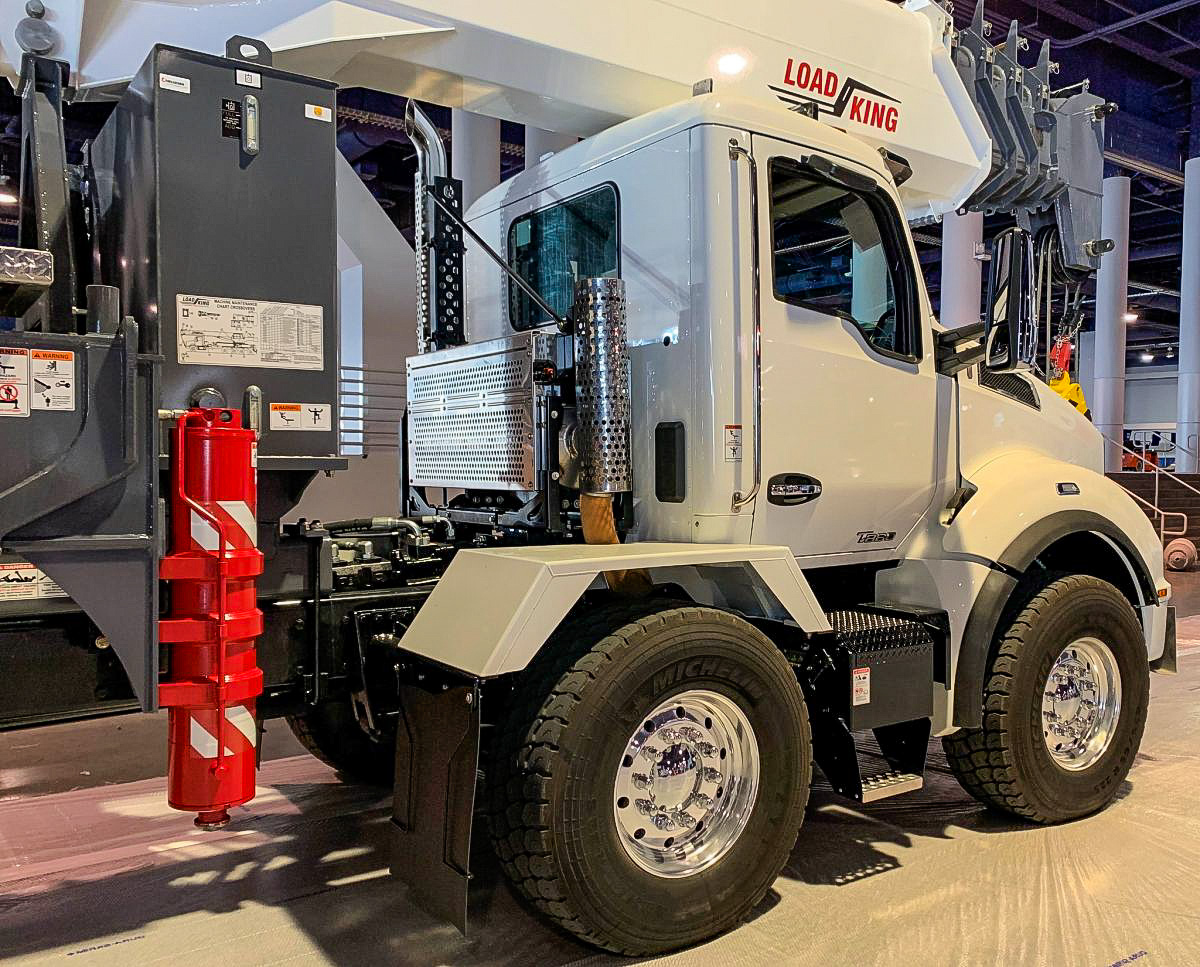Kenworth intros T880 Twin Steer vocational truck | Dump Truck Company
Kenworth introduced a new, factory-installed twin steer configuration for its Kenworth T880 at ConExpo-Con/Agg 2020 in Las Vegas.
Available as a day cab, the new Kenworth T880 Twin Steer with set-back front axles is ideal for crane, mixer and other vocational applications that require 86-inch axle spacing to meet local bridge laws and enhance overall load carrying capacity.
The Kenworth T880 Twin Steer provides 40,000-pound rated front axles, springs and steering gears. The front suspension is equalized between the front and rear steer axles for greater driver comfort and payload distribution.
The new T880 configuration offers both the PACCAR MX-13 engine rated up to 510 hp and 1,850 lb-ft of torque, and the PACCAR MX-11 engine with up to 430 hp and 1,650 lb-ft of torque. The T880 Twin Steer is standard with a 116.7-inch BBC short hood optimized for the PACCAR MX engine family. The 122.6-inch standard BBC hood is an option for the PACCAR MX-13 and the optional Cummins X15 engine.
The T880 Twin Steer package also includes aluminum fenders over the second axle and step-between axles for cab access. Battery box choices include parallel between right-hand steer axles with up to three batteries, in-cab, or any back-of-cab option.
A back-of-cab vertical DPF/SCR exhaust system is required with the PACCAR MX-13 and PACCAR MX-11.
“The latest addition to the Kenworth T880 family provides an important new option for our vocational customers that expands their productivity,” said Laura Bloch, Kenworth assistant general manager for sales and marketing.
A new Kenworth T880 Twin Steer – equipped with a Custom Truck crane, 505-hp engine and Allison 4700RDS 7-speed automatic transmission – is on display in the Kenworth booth (S62939) March 10-14 during ConExpo-Con/Agg at the Las Vegas Convention Center.
The Kenworth vocational line-up also features a T880S Twin Steer model with set-forward front axles and 61-inch axle spread to maximize payload. That model was introduced in 2018.


